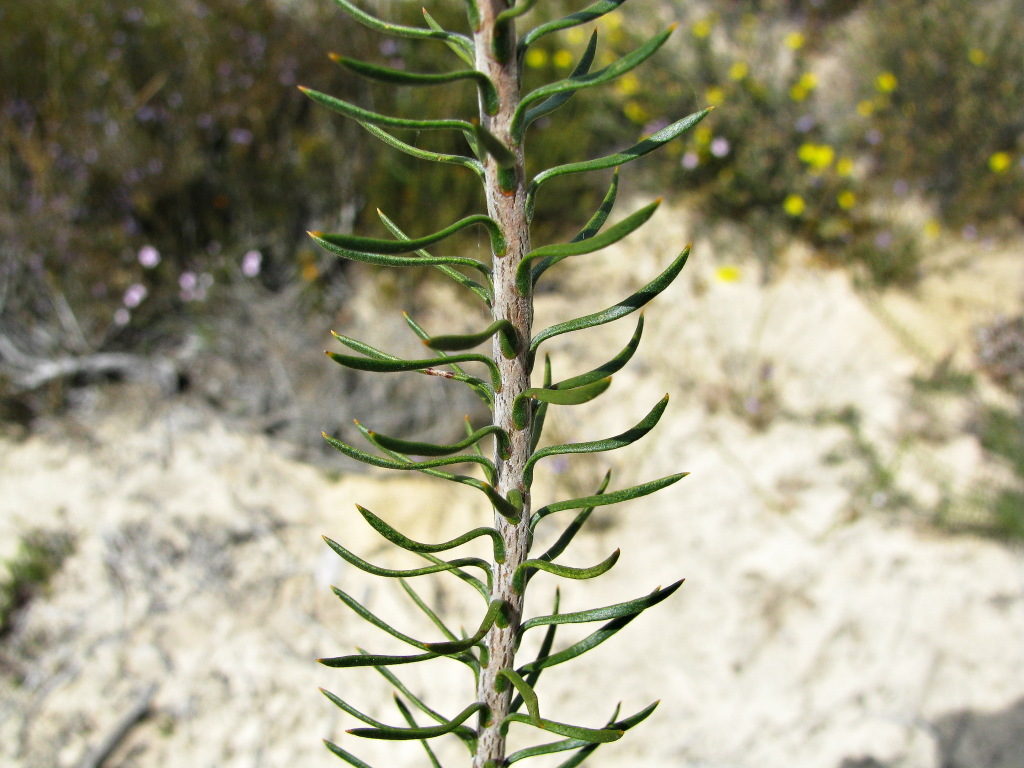Conospermum patens
Schltdl. Slender Smoke-bushErect shrub to c. 1 m high; branches white-pubescent. Leaves crowded, widely spreading, linear to linear-oblanceolate, 7–30 mm long, 0.7–1.5 mm wide, rarely wider, distally upturned, dull green, glabrescent; apex acute, aristate. Inflorescence a terminal or upper-axillary corymbose panicle, mostly 1–4 cm across; common peduncles ascending, 4–20 cm long, longer than branches of inflorescence; flowers in short, dense, pedunculate spikes, each flower sessile, subtended by a blue-grey, persistent bract c 3 mm long; perianth tubular at base, splitting c. two-thirds of the way up; tepals 5–7 mm long, white, blue-grey or purplish, densely hairy; ovary comose at apex, also ringed by basal hairs. Nut 2–3 mm long, hairy. Flowers mostly Sep.–Dec.
LoM, MuM, Wim, GleP, VVP, Gold, CVU, GGr, DunT. Also SA. In Victoria confined to the west, mainly in the Grampians, Little and Big Deserts and Casterton area where occasional in dry heathlands and heathy woodlands. .
Jeanes, J.A. (1996). Proteaceae. In: Walsh, N.G.; Entwisle, T.J., Flora of Victoria Vol. 3, Dicotyledons Winteraceae to Myrtaceae, pp. 830–887. Inkata Press, Melbourne.
 Spinning
Spinning

